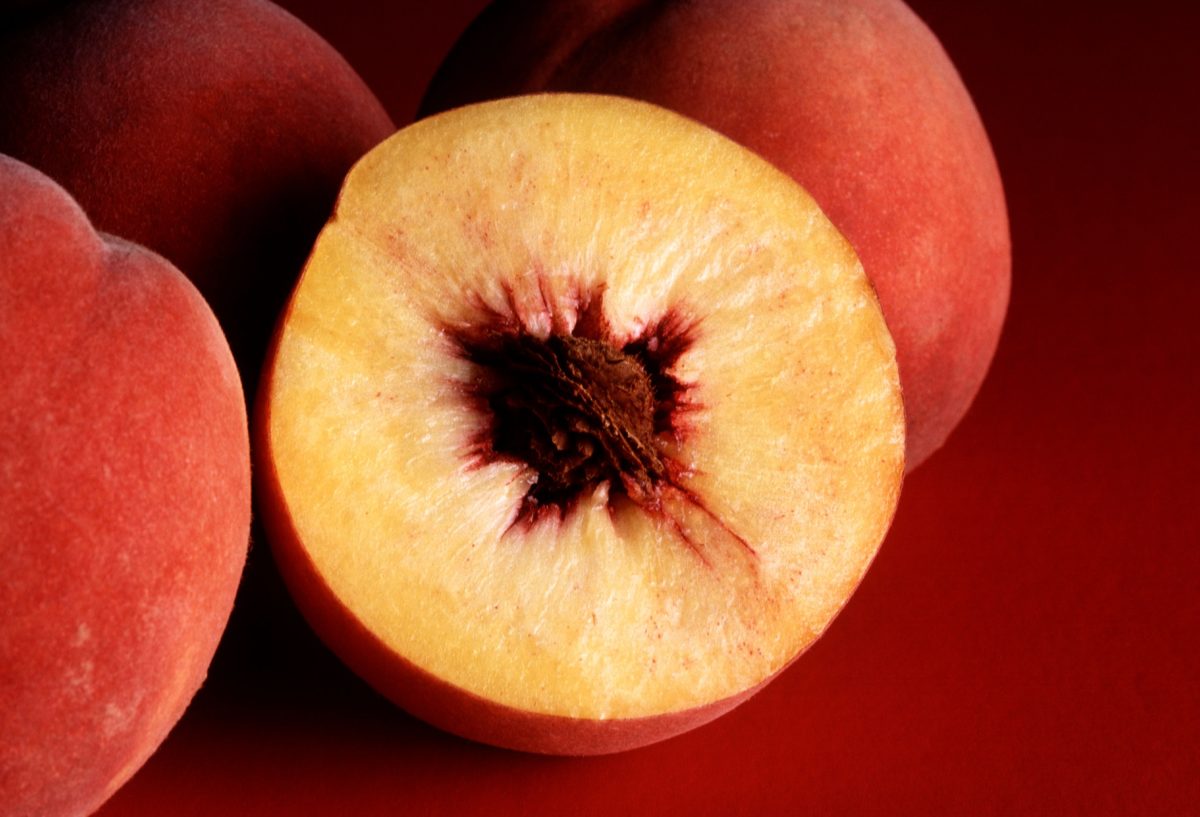By Breanna Kendrick
Could new rootstocks offer hope for peach growers struggling with difficult disease issues?
Tom Beckman spoke about the potential for some of his advanced rootstock selections at the recent Stone Fruit Field Day in Citra, Florida. Beckman, a U.S. Department of Agriculture horticultural researcher, noted that one selection in particular could be a replacement for Guardian rootstock, currently regarded as one of the best rootstocks available. The name of this new rootstock cannot be released at this time, but more information will be available in the future.
Beckman’s new materials build on Guardian’s capabilities (resistance to peach tree short life, in particular) and add broader root-knot nematode resistance along with improved, grower-friendly traits like reduced vigor and rootstock suckering. One redleafed peach seedling selection goes further in that it also possesses some resistance to Armillaria root rot, a rare quality in peach seedling lines and something that Guardian sorely lacks. This feature makes this rootstock a very attractive candidate for use in Georgia and South Carolina, where peach tree short life and Armillaria root rot are endemic and are often present side by side on old peach land. Though this selection’s resistance to Armillaria is not as good as MP-29’s, this rootstock is seed propagated (rather than clonally propagated like MP-29), which makes it an easier fit for the nurseries that propagate trees for the southeastern industry. Hence, better availability and lower production costs would appear possible as well.
One thing that concerns Beckman, though, is that several of these new lines, including the redleaf one, have Flordaguard in their pedigree, which is where their resistance to M. floridensis came from. Because of this, the fear is that since Flordaguard is failing on some sites, these new rootstocks may have problems as well. “I see this particular selection as having some real potential in the Southeast, particularly where growers are not yet suffering severe Armillaria problems and might desire a higher vigor tree than MP-29 will provide, but it’s not an obvious solution to the problems we’re seeing with Flordaguard in Florida at the moment,” Beckman explained.
For growers experiencing nematode problems with Flordaguard, Beckman suggested the following: “You’re going to have to do something else. We don’t really have a rootstock capable of addressing all your problems that can be plugged in at this point in time. I would say stick with Flordaguard because of its availability and proven adaptation to the Florida climate.”
Beckman said he knows from experience that once established, susceptible rootstocks appear to be capable of accommodating and tolerating nematodes. If the trees are established in the presence of a small or nonexistent population of root-knot nematodes, the pests may return, but the established trees will have a large root system and can usually cope reasonably well with the pests.
Beckman suggests pre-plant nematicide fumigation to reduce root-knot nematode populations prior to planting. “There are some new nematicides coming out that are safer to use and seem to have some additional flexibility,” stated Beckman. “A lot of the current nematicides are quite toxic to the trees themselves, so if you apply them after you’ve planted the trees, you’re going to damage the tree severely as well. These materials have to be applied and allowed to dissipate before you plant. However, with some of the newer materials, it appears to be possible to apply them post-plant without damaging trees.”
Share this Post
Acreage, Fusarium Wilt on Minds of North Florida Watermelon Growers
December 23, 2025Specialty Crop Grower Magazine: Strawberry Farming a Calling for South Carolina Producers
December 23, 2025Drought Monitor Update Across Southeast
December 23, 2025Early Watermelon Plantings the Norm in North Florida
December 23, 2025










